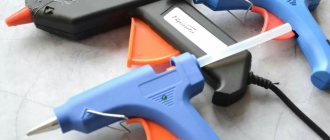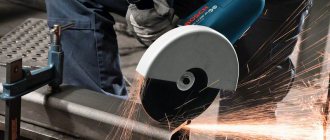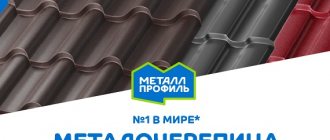Scope of application and principle of operation
The need to use polyurethane foam, respectively, and the use of a gun used to spray it, arises when performing various types of repair and construction work, such as:
- sealing joints of various building structures, furniture or technical devices;
- insulation of structural elements of buildings and structures at the stage of their installation (windows, doors, roofing, enclosing structures, etc.);
- performing installation work related to gluing various materials to each other (attaching foam plastic and other insulation materials to the building base);
- work related to sound and noise insulation of premises;
- filling voids of various origins and cracks in elements of various structures.
Using a foam gun when installing plastic windows
The operating principle of this type of gun is based on the fact that a cylinder with polyurethane foam is installed in the adapter of the device, which is in it under pressure in an aerosol state. When the trigger is pressed, the valve mounted on the cylinder opens, and the mounting foam begins to move along the barrel of the gun through a fitting installed at its end. The quantity and speed of aerosol supply is regulated by a special clamp (adjusting screw).
Product design
All types of models, in fact, have almost the same design with a standard foam supply mechanism, but there are two options for its design:
Non-separable.
If suddenly the product stops working, it can be safely scrapped. There is no way to fix the breakdown and extend the life of such an instrument.
Collapsible.
If any malfunction is detected, the product is disassembled, possible clogging areas are cleaned, moving parts are lubricated, and there is a high chance that the tool could be revived.
In terms of savings, of course, it is preferable to use a foam gun that you can try to repair rather than one that can only be completely replaced.
When, taking into account all the recommendations, one candidate (or several) for purchase has been selected, it is time to move on to the most important test of suitability. If suddenly it does not live up to the expectations placed on it, the instrument will have to be returned to the store, and in order to do this without problems, we be sure to keep the receipt and packaging.
The first check is short-term
In order to prevent the seller from being able to find fault with the appearance of the instrument when returning it, not foam will be used for testing, but a cleaning agent (essentially a common solvent - acetone). So, we install the cylinder in the appropriate place, unscrew the lock a little, and make a couple of pulls of the trigger.
During the process, no leaks of the substance should be detected, the stream should come out under pressure, the parts should be firmly fixed and not loose.
Second long-term check
After you are convinced of the serviceability of the product during the first check, we move on to the next one. Having filled the tube in the gun with the cleaning agent, without removing the bottle, set the product aside for several days (preferably at least 3). After the deadline has expired, we return to it and press the trigger. If the substance simply leaked out, then such a tool is returned to the store, but if it flew out under pressure, we keep it for ourselves.
Sectional design of a foam gun
The main design elements of the spray foam gun are the adapter (gearbox), through which the cylinder is installed, and the aerosol supply mechanism, placed in a single housing. All structural elements of such a device are indicated in the section shown in the following figure.
Sectional view of a spray foam gun
This figure shows the following structural elements, namely:
- 1 – nozzle (fitting);
- 2 – trunk;
- 3 – needle rod;
- 4 – adapter;
- 5 – body;
- 6 – through hole;
- 7 – linings;
- 8 – locking nut (adjusting screw);
- 9 – spring;
- 10 – handle;
- 11 – fixing sleeve;
- 12 – trigger.
For your information! The bolt and handle are attached to the pistol body via a threaded connection. The needle rod and the trigger are mechanically connected to each other, and the foam flow is adjusted due to the presence of a pressure spring, a lining and a lock nut. The rotation of the lining sets in motion the bushing, which moves in the axial direction, which, in turn, limits the movement of the needle rod and, as a result, the amount of foam supplied to the nozzle.
Main structural elements of the mounting gun
Matequs Super Teflon
Matequs Super Teflon - super price. The most expensive representative of this class. Features - the output polyurethane foam is more plastic and the filling percentage is high. A needle with a diameter of four millimeters allows you to close wide openings. Economical delivery.
The cylinder is enough to install five double-glazed windows. The handle is covered with nylon. Dismountable with threaded connections, easy to clean. Foam does not stick to the gun body. Long service life.
Pros:
- with an increased needle diameter of up to 4 millimeters, it is possible to fill large gaps;
- switching to economy mode;
- Teflon coating;
- collapsible design;
- thin nose;
- metal parts, handle covered with high-quality material.
Disadvantages: gentle cleaning of the coating, small dimensions are not convenient for large hands, high cost.
When choosing a tool, you should pay attention to:
- design - collapsible or not;
- stainless steel housing;
- Teflon coating of parts;
- presence of an o-ring;
- reinforced trigger with smooth pull;
- tube length. The short trunk fills voids shallowly;
- comfortable handle grip;
- acceptable price.
Here are the main characteristics that need to be taken into account, and the buyer himself decides which pistol to choose. Before choosing, the first thing you should check is the starting mechanism; a hissing, sound signal should occur (the cylinder is under pressure).
Determine if there are any gaps between connections (by pressing the trigger). Spray a test run of foam and make sure the device is working.
After testing the gun (if it meets all the requirements), feel free to buy it. Determine the purpose in advance: for one-time work it is easier to buy an inexpensive Chinese copy. For complex solutions, choose a tool made from high-quality materials, solid assembly, and excellent performance properties.
Main technical characteristics
When choosing a gun model for polyurethane foam, of course, you should know what technical characteristics you should pay special attention to, because... The ease of use and service life of such devices depends on this. The main technical characteristics for such a tool are:
- ability to maintain tightness, depending on the type of valves used;
- material used in the manufacture of the body and main structural elements.
Professional model "Tytan Professional Gun Standard Max"
The ability to ensure tightness determines the quality of the gun’s operation, expressed in the accuracy of dosing and preventing the foam from drying out in the gun. Various types of plastic and metal are used in the manufacture of tools. Models for professional use are made of impact-resistant plastic and metal.
Important! Guns made of metal are easy to maintain, reliable and have a long service life.
How to choose a gun for polyurethane foam
If it is necessary to carry out work using polyurethane foam, the question arises of purchasing a mounting gun for spraying it.
The ability to disassemble the spray foam gun greatly simplifies its maintenance
In this case, the criteria for choosing such a tool will be the following parameters:
- Purpose and nature of use - for a one-time use, you should not buy a professional tool, and for performing a large volume of work, a household model will not cope with the task.
- Technical characteristics (valve tightness and materials used).
- Possibility of disassembling the structure to clean the main elements of the device.
- The availability of spare parts depends on the reliability of the manufacturer and its demand.
Insulation of interior partitions using polyurethane foam and a professional gun
How to clean a gun after use
To understand how to clean a foam gun, you need to remember the design of this product. To ensure the possibility of continuing installation with this device, it is necessary to clean the barrel from foam residues.
It is best to clean the structure immediately after completing the work, while the material has not yet gained strength. Liquid foam can be easily removed with solvents, but frozen material will have to be dealt with mechanically.
Using a special cylinder
To clean the structure, remove the used foam container and screw on a special bottle with cleaning liquid that is under pressure. This product is intended for cleaning the instrument immediately after use.
Under pressure, the cleaning fluid penetrates the barrel, cleans the valve, trigger and removes residues through the nozzle. When the tool is completely free of foam and pure solvent flows through the barrel, the process is complete.
Mechanical cleaning
This technique has to be resorted to when cleaning with special liquids does not bring success. If a significant amount of time passes after work, the foam turns into a solid state and acetone cannot penetrate inside the mechanism.
Mechanical cleaning consists of scraping off the remaining foam from the outer surface of the gun and cleaning the barrel. You can remove dried foam from the handle and the outer surface of the barrel using a stationery knife. You need to carefully clean the nozzle in the same way, but to get deeper into the barrel of the gun you will need a thin steel wire.
The wire is screwed into the barrel of the gun, clearing the way for the subsequent pouring of solvent. It is advisable to clean the barrel along its entire length using a wire, then the final cleaning using a spray bottle will take place without problems.
In the same way, remove dried material residues from the valve threads, preparing the surface for solvent treatment. The residues are cut off with a knife and cleaned, after which the threads are completely filled with solvent and final cleaning is performed.
Cleaning the gun using high pressure washers is dangerous. The gun mechanism is not designed for such loads and may fail.
Professional models of spray foam guns
The domestic professional tool market offers models of spray foam guns manufactured by foreign and Russian manufacturers. The most popular among them are products from such (Germany) and “Matrix” (China-Germany), “Hilti” (Liechtenstein), as well as “FINCH INDUSTRIAL TOOLS CANADA INC.” (Canada) and “Zubr” (Russia).
"Kraftool Celnometal"
Appearance of the “Kraftool Celnometal” model
The model is characterized by ease of maintenance, functionality and reliability, which is confirmed by reviews from real users.
| Frame | Material | Weight, kg |
| Collapsible | Metal | 0,82 |
In addition, the model has a Teflon coating on the nozzle and sealant supply regulator, which greatly simplifies maintenance of the tool.
Review of the “Kraftool Celnometal” model:
More details on Otzovik: https://otzovik.com/review_3534498.html
"Hilti CF DS1"
Appearance of the Hilti CF DS1 model
Distinctive features of the model are low weight and high quality workmanship.
| Frame | Material | Weight, kg |
| Not collapsible | Reinforced plastic | 0,4 |
The presence of a thin nose and the possibility of use in different planes make this model one of the best in the professional tool segment.
Review of the Hilti CF DS1 model:
More details on Otzovik: https://otzovik.com/review_3367215.html
"Matrix 88669"
Appearance of the gun for polyurethane foam model “Matrix 88669”
The model is popular due to its reliability and trouble-free operation.
The body is coated with Teflon, which makes cleaning the gun much easier, and the presence of two limiting handles makes use safe from injury.
| Frame | Material | Weight, kg |
| Collapsible | Metal | 0,55 |
"FIT 14270"
Appearance of the model “FIT 14270”
A distinctive feature of this model is the high quality of the materials used and the assembly performed. This gun can be used by both professionals and for personal use, and the presence of special attachments expands its functionality.
| Frame | Material | Weight, kg |
| Collapsible | Metal and plastic | 0,5 |
Review of the model “FIT 14270”:
More details on Otzovik: https://otzovik.com/review_3305815.html
"Zubr Turbo 4-06877"
Model "Zubr Turbo 4-06877"
The model is affordable and can be used by amateurs and professionals. The cylinder holder is treated with a special coating, and the polishing of the inner surface of the barrel facilitates the process of servicing the product.
| Frame | Material | Weight, kg |
| Not collapsible | Metal and plastic | 0,61 |
Foam gun: features of choice
If you have started a small renovation in your own apartment, you can get by with a household gun. From the moment of use, try to use the sealant quickly to prevent the foam from drying out. If you have not used it as intended within half an hour, you will not be able to continue working with the tool.
For construction and large-scale renovations throughout the entire house, it is better to opt for special industrial models. So, you can significantly save consumables and quickly complete all sealing work. Don't forget to clean the tool after each use. Make the right decision when choosing between industrial and consumer pistols in a given situation.
When choosing a “foam tool”, pay attention to the material:
- plastic pistol designs are considered the cheapest. There may be several tubes in the kit, since polyurethane can clog in them. These are short-lived guns that you won't be able to clean. You will not be able to disassemble the structure to replace a spring or other part. This is a variant of a household pistol with a correspondingly low price. After use, you can dispose of it without any problems;
- metal guns made of steel have a service life of several years. If necessary, you can replace the part; they can be cleaned. Use the gun carefully and avoid strong impacts so that it can last at least 5 years;
- combined models. In such variations, the barrel must be metal, and the remaining parts can be plastic. This option is convenient to use because they are much lighter than metal tools. If you are satisfied with this option, before purchasing, be sure to check the possibility of disassembling the mounting gun;
- Teflon models. A special coating protects the surface from foam adhesion. The non-stick coating is easy to clean. They cost an order of magnitude more than the tools described above. They have proven themselves to be excellent in use, so there is a demand for them, despite the price. High quality polyurethane guns with Teflon coating and improved ergonomic design are suitable for regular use in professional environments. Teflon is used as a coating to reduce cleaning and maintenance time.
If you are looking for a professional pistol with a decent service life, consider the following parameters:
- It is better to choose a Teflon-coated gun. It's much easier to clean. In such guns, most often the body, adapter, valve and nozzle are coated with Teflon, which prevents foam from sticking to the gun and makes cleaning easier;
- A nylon handle is a great option because it's resistant to the solvents you'll definitely be using for cleaning;
- reliable mechanism high level of wear resistance;
- adjustable foam flow – ability to control the amount of sealant;
- conical nozzle – the ability to fill even the narrowest gaps with foam;
- extended tube – filling with foam in hard-to-reach places;
- the optimal barrel length that determines the working distance.
Household spray foam guns
Among the models intended for one-time work rather than professional use, the most popular are the following models (Russia) and “Biber” (Germany), “STAYER” and “BLAST” (China).
"Biber Master 60111"
Appearance of the model “Biber Master 60111”
The model is distinguished by its affordable price and at the same time high technical performance, allowing the gun to be used even under intensive operating conditions.
| Frame | Material | Weight, kg |
| Collapsible | Plastic and metal | 0,67 |
"PIT P7000003"
Model “PIT P7000003”
A mounting gun from Chinese manufacturers is the best product for performing one-time jobs. In the model, all elements are made of plastic, with the exception of the barrel and valve, which made it possible to reduce the cost of the product and reduce its weight.
| Frame | Material | Weight, kg |
| Not collapsible | Plastic | 0,4 |
Review of the model “PIT P7000003”:
More details on Otzovik: https://otzovik.com/review_2201679.html
"Stayer Master EconoMax 06861"
Stayer Master EconoMax model
This model is distinguished by its unpretentiousness in use, which is due to its simplicity, as well as its ability to be used for a long time, because only high-quality materials are used in production.
| Frame | Material | Weight, kg |
| Not collapsible | Plastic and metal | 0,41 |
Review of the model “Stayer Master EconoMax 06861”:
More details on Otzovik: https://otzovik.com/review_3508147.html
"Blast Extra Lite 590024"
Appearance of a disposable gun for polyurethane foam “Blast Extra Lite”
The model is one of the cheapest of all offered on the domestic market.
In addition, thanks to the maximum possible use of plastic, the product turned out to be the lightest in comparison with analogues of the same type.
| Frame | Material | Weight, kg |
| Not collapsible | Plastic | 0,15 |
Review of the model “Blast Extra Lite 590024”:
More details on Otzovik: https://otzovik.com/review_2048118.html
Where and for what are polyurethane foam mounting guns used?
The types of tools under consideration have found their application to perform various tasks. Most often, they are used by window and door installers, as well as builders. Moreover, their use is impossible without special cylinders with a polyurethane composition. Moreover, it should be noted that the polyurethane composition can be used both for sealing and insulation, and for gluing. Let's take a closer look at the purposes for which polyurethane foam is used with a gun:
- Sealing seams and holes that occur when walls are insulated with polystyrene foam or polystyrene foam
- Insulation of window and door openings, as well as elimination of drafts
- Bonding door and window frames, as well as sheets of polystyrene foam and expanded polystyrene when insulating walls
- Sealing joints
- Soundproofing
- Production of various designs, layouts, crafts, etc.
- Blowing out holes when installing air conditioners
- Filling cracks and other voids
The scope of use of foam squeezed out of a cylinder using a mounting gun is not limited to the above description. It is used always and wherever it is necessary to quickly and efficiently eliminate cracks or holes in the walls, from which a draft arises and mold appears. Some even use the material in question to blow out car exhaust pipes, doors, hoods and trunks, which is done in order to teach persistent violators of parking rules a lesson. However, such use of the composition is considered hooliganism, since getting rid of the sprayed and dried composition is quite problematic.
This is interesting!
When using foam, it is important to know one of its features - it is susceptible to losing its properties when exposed to ultraviolet radiation. That is why it is not recommended to apply foam where the sun will shine on it. If cracks or holes are being sealed on the outside of the wall, then after applying the composition, the areas should be covered with plaster.
How to use a spray foam gun correctly
A spray foam gun is a fairly simple tool to use, so to use it correctly you need to know a few basic rules:
- the container with polyurethane foam should be located on top, if possible in a vertical plane, because otherwise, the gas may come out, or its pressure will not be enough to spray the contents of the cylinder;
- before use and during a long operating cycle, the foam can must be shaken a certain number of times;
Expert's point of view
Dmitry Kholodok
Technical director of repair and construction
Ask a Question
“Before starting work, the foam can should be shaken at least 20 times, and during work - in accordance with the need.”
The foam canister should always be located on top of the gun
- before installing the can, the adjusting screw must be closed all the way, and after installation, open it ½ turn and press the trigger, thereby checking its functionality;
- during operation, the sealant supply speed is set by an adjusting screw;
- an open container cannot be disconnected from the gun until the foam is completely used up, otherwise it will dry out;
- After finishing using the can, the gun should be cleaned.
Before applying foam, the surface must be cleaned of dust, dirt and foreign objects
You can learn how to use a foam gun by watching the following video.
Stayer Economy
Stayer Econom - German “super endurance”. Steel tube. The trigger is metal. The aluminum container with foam is secured with a threaded clamp. After completion of the work, it is necessary to clean the barrel to prevent blockage of the passage with foam residues.
Advantages:
- stainless steel tube protects against scratches;
- the trigger is made of metal;
- the cylinder is secured with an aluminum connection;
- adjustable supply dose;
- handle for comfortable operation;
- affordable price.
Disadvantages: cannot be disassembled, weak design, cylinder mounting leaves much to be desired, flushing with a special-purpose liquid.











